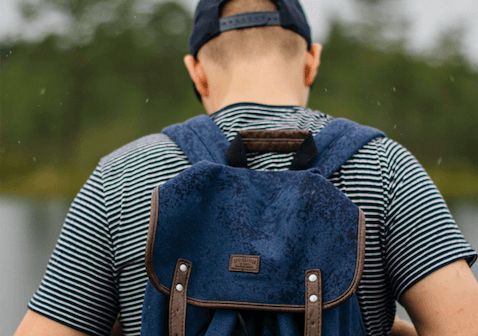The start of a new school year is the perfect time to discuss and practice good backpack habits! Our team commonly sees patients with lower back pain and injuries that come from carrying backpacks and workbags. It is important to understand how backpacks can cause pain for students going back to classes, co-op students, and adults who carry workbags. At LiveWell Health & Physiotherapy, we know that preventing lower back pain and treatment all stems from a conscious effort to practice good posture and planning effectively. Here are the team’s top tips to avoiding lower back pain and subsequent pain treatment this back-to-school season.
Choose the Right Straps
Backpacks are designed to help evenly distribute their weight across your shoulders. Essentially, backpacks place weight on your shoulders and spine which can lead to spinal alignment and posture issues. These problems normally manifest themselves in the form of back or neck pain, muscles shoulder soreness and straining, and overall poor posture. Make sure you are choosing a bag with straps wide enough to alleviate shoulder and back pain but not too wide so that they cover past your shoulders. We recommend always opting for bags that have adjustable straps so that you can move them to fit your body perfectly. If your straps do not fit your body correctly, then you risk your straps sliding off and causing your muscles to be jerked around.
Always Wear Both Straps
We know that sometimes double strap backpacks are not always in style or the trendiest items, but they are designed to avoid unnecessary strain on any given area of your body. One-strap backpacks or workbags can wreak havoc on your muscles and leads your spine to have to compensate for one side of your body. This can cause lower back pain because of the way your body must adapt to the uneven weight distribution. Especially with workbags, we know it is common for people to be in a rush and to haphazardly throw their bags on. Try to avoid getting lazy and slinging your bag on one arm or around one shoulder before rushing off. Instead, always take the time to pull both straps over your shoulders so that your backpack can help evenly distribute weight and keep your body in balance.
Adjust Your Bag Along Your Spine
You should always be aware of how far down the spine your backpack is to keep pressure off your lower back and spine. Try to adjust your bag so that it sits just below your waist. Think about where the natural curve of your spine is and move your bag so that it is just below your curve but above your hips. This position is the optimal location for preventing as much back pain as possible. It is for this exact reason that we recommend grabbing a backpack with adjustable straps so that you can easily adjust the shoulder strap lengths until the backpack falls in this location.
Consider a Rolling Backpack
We know that some schools do not allow rolling bags so make sure you double-check your education facility’s policies before making any purchase. If your school allows rolling backpacks or you’re looking for a new work bag, we always recommend rolling bags. This helps move the weight off your back entirely and lets you pull your supplies instead. You still need to watch out for any arm muscle strain, but these are a great solution for preventing back, spine, and neck pain.
Only Carry the Essentials
Try to only pack your bag with the necessary items you will need each day. Go through your bag or your children’s schoolbags bi-weekly to take out anything that is not essential. Creating this regular habit will prevent backpack overload so that your backpack does not become a sort of dumping ground for your belongings. Do not think of your bag as a storage location or extension of your desk or closet – always remove any extra weight when possible. Our Chiropractors recommend that backpacks should weigh between 10 to 15% of the backpack wearer’s own body weight. For example, say your child weighs 90 pounds, then their backpack should ideally be 9 pounds and never any more than 14 pounds. We do not expect you to consistently plop your backpacks on a scale to check this measurement but it’s a good rule of thumb and estimate to keep in mind when doing bi-weekly clear outs.
—
We hope this blog helped you understand the importance of practicing good backpack wearing habits in preventing lower back pain and treatment like Physiotherapy, Chiropractic Care, or Osteopathy. Don’t forget to view our services that can help you achieve your rehabilitation goals.
Want more lifestyle advice on how to improve your overall health and wellness? Contact our LiveWell Health and Physiotherapy Kitchener or Baden teams to get more information and book your next appointment. You can also reach out to us by email or social media and one of our team members would be more than happy to help answer any of your questions! All of our practitioners have more tips and expert guidance to help improve the overall quality of your life.

